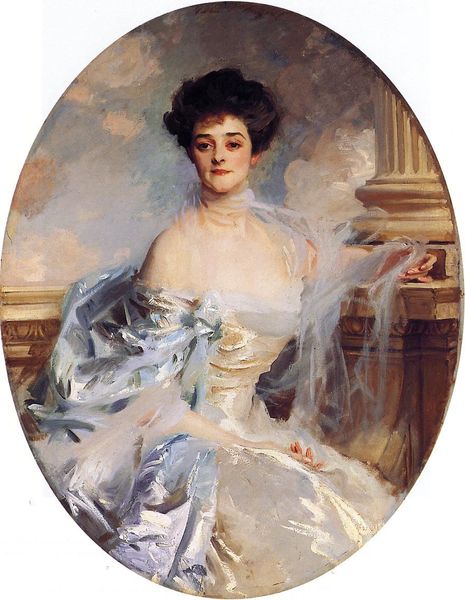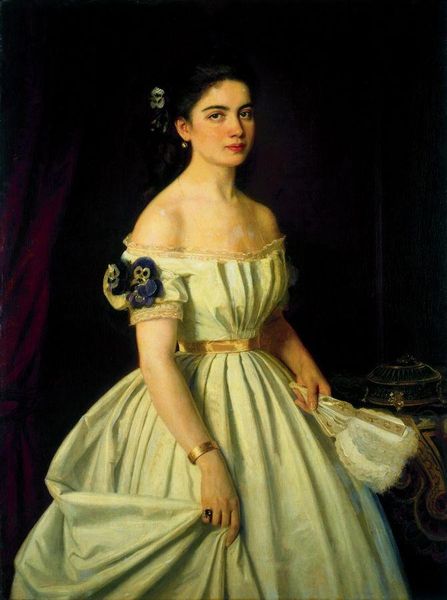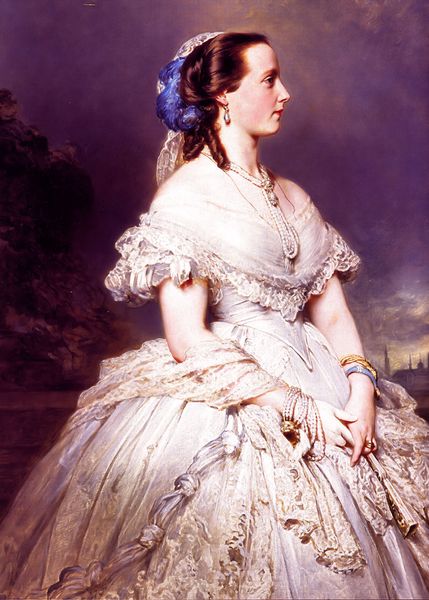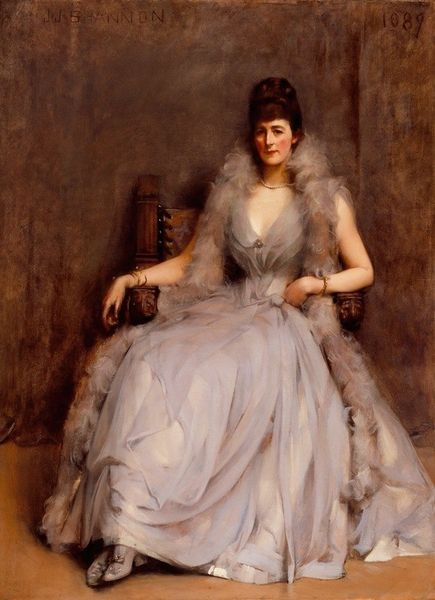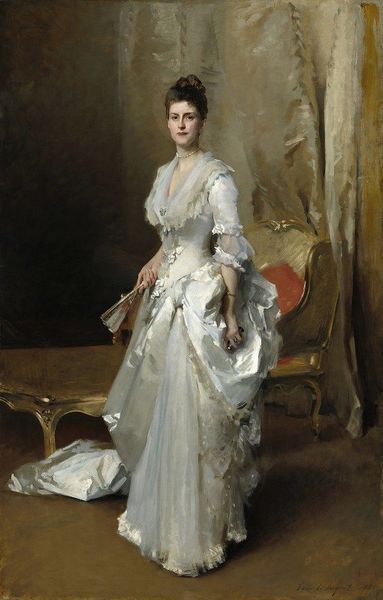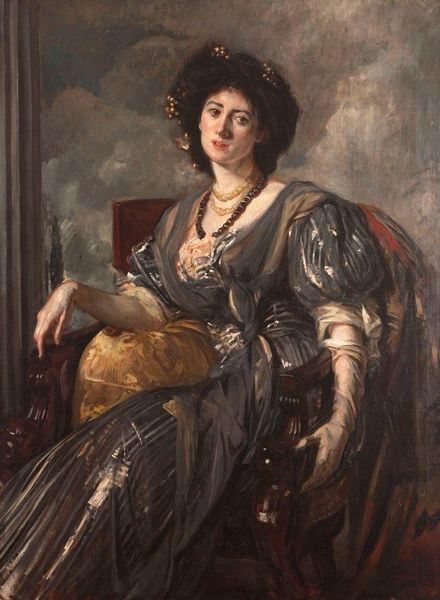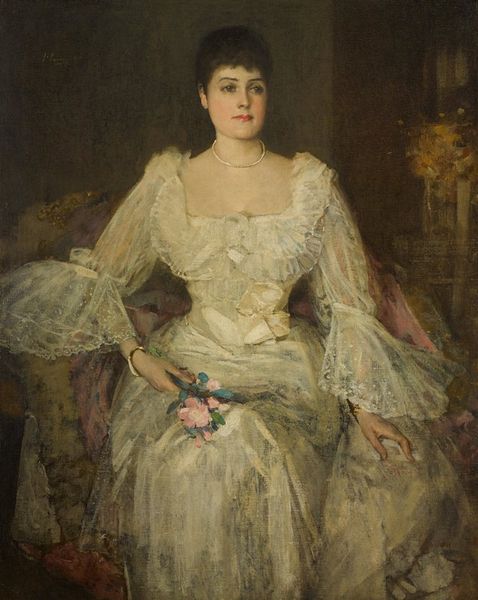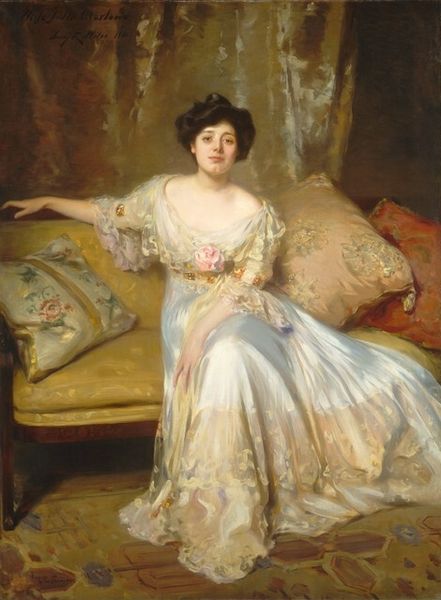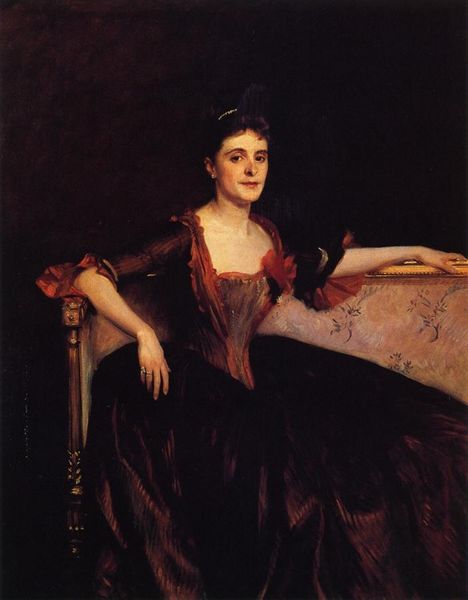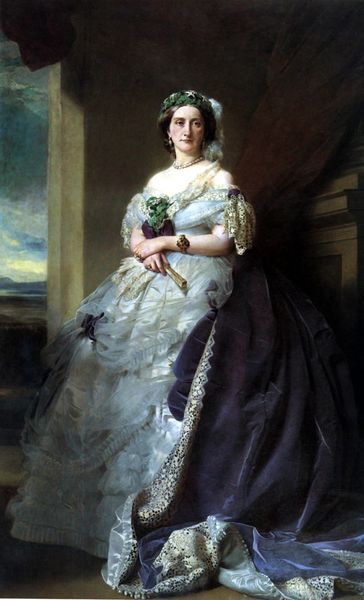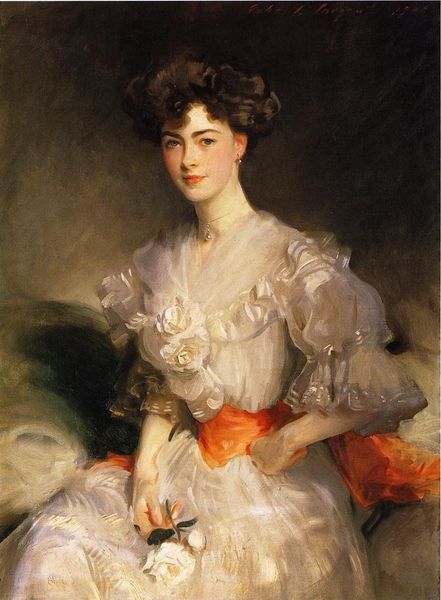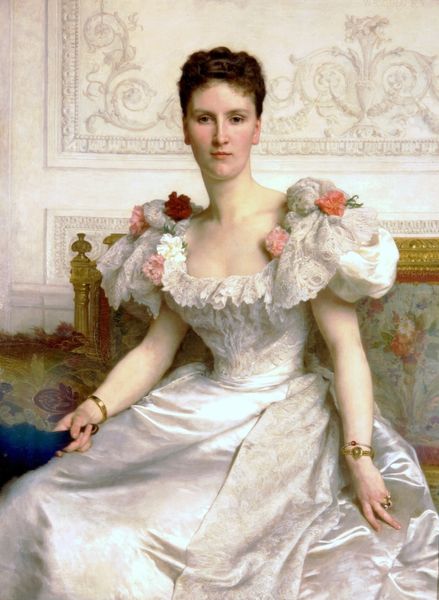
Copyright: Public domain
Editor: We're looking at John Singer Sargent's "Alice Wernher, born Alice Sedgwick Mankiewicz" from 1902. It's an oil painting, and there's something about her gaze... a quiet confidence. The way she's posed, with her hand resting on the chair, it suggests a certain power, but also a vulnerability. What do you see when you look at this portrait? Curator: I see Sargent grappling with the iconography of the modern woman. Notice how her gaze avoids direct engagement, yet conveys an undeniable presence. The pale dress, adorned with delicate blue ribbons, whispers of tradition, of expected femininity. Yet, that steely gaze and the firm set of her jaw speak to a different narrative, one of evolving social roles and nascent female agency. Look closer at the way the light catches her jewelry – symbols of status, certainly, but perhaps also subtle armour. What do you make of that juxtaposition? Editor: That's a good point about the armor. The soft dress versus the strong expression. It makes you wonder what her life was really like. Was Sargent trying to hint at a hidden strength, or was that just the fashion of the time? Curator: Perhaps both. Fashion itself can be a powerful symbol. The elaborate dress, the pearls, the bow in her hair – they place her firmly within a particular social sphere, but also offer a visual language. Consider the colours he chooses, the delicate blues against the neutral background: colours associated with the Virgin Mary, but also with the aristocratic class. A fascinating blend of cultural and personal signifiers. Do you find this adds another layer to your understanding? Editor: I think so! It’s more than just a pretty picture. It's about Sargent trying to capture a whole changing world in one person. Curator: Exactly. Sargent uses these visual cues, the details of dress and pose, to evoke a sense of both belonging and rebellion. We're left pondering the internal world of Alice Wernher, her position in a rapidly changing society, and her individual interpretation of womanhood at the turn of the century. It's in this subtle tension, in this iconographic dance, that the true power of the portrait resides.
Comments
No comments
Be the first to comment and join the conversation on the ultimate creative platform.
